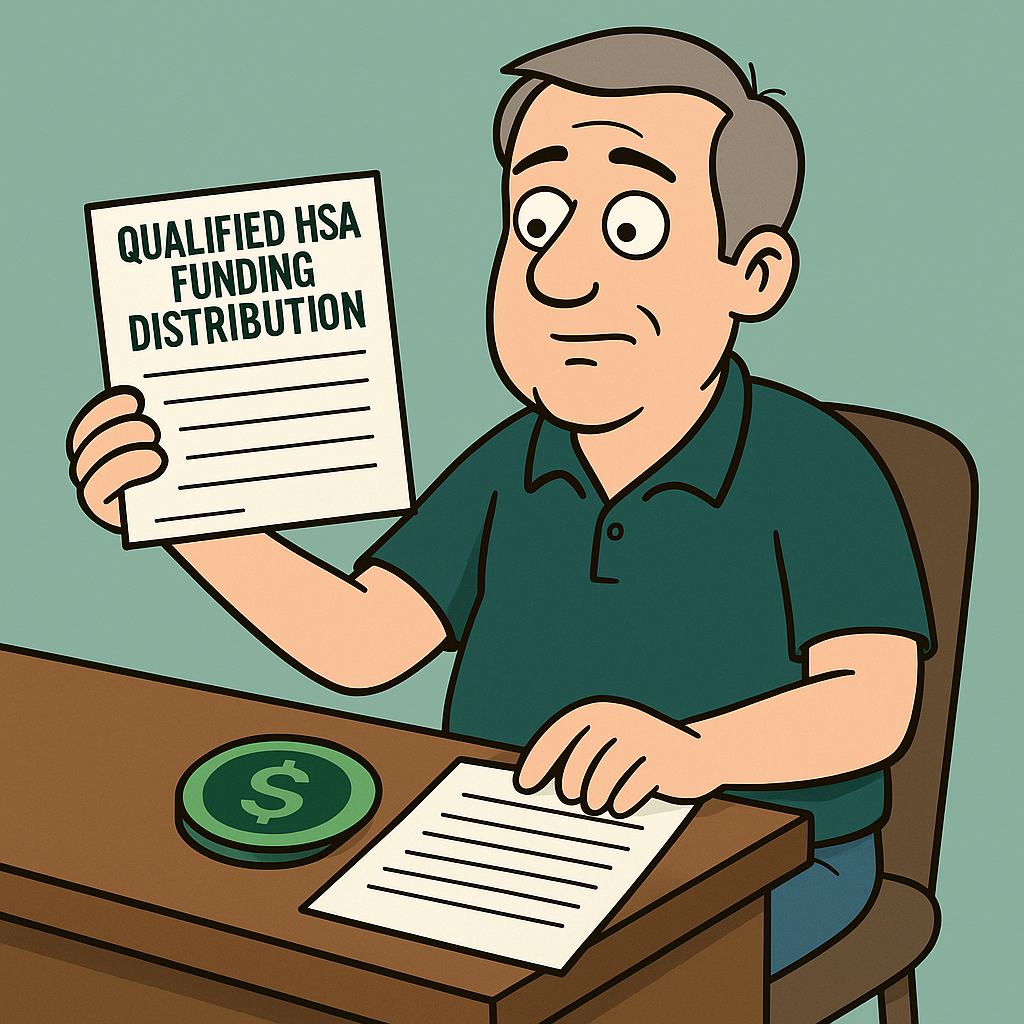There’s a one-time IRS rule that lets you move money from an IRA or 401(k) into your HSA tax-free. Here’s how it works, who can do it, and whether it’s smart for you
A Little-Known Move You Might’ve Missed
You already know HSAs are underrated. But what if I told you there’s an IRS loophole — once-in-a-lifetime — that lets you shift money from your IRA or 401(k) directly into your HSA?
I did it once myself (somewhere around $3,500). It felt like finding a $20 in an old jacket. Most people don’t even know it’s an option. I wanted to start an HSA but didn’t have the extra money to fund it, so this worked out perfectly to get started.
This post is your guide: how it works, who qualifies, and whether you should ever consider it.
What Is the Qualified HSA Funding Distribution (QHFD)?
The QHFD, or Qualified HSA Funding Distribution, is a one-time transfer allowed by the IRS: money moves directly from a retirement account (like an IRA or 401(k)) into your Health Savings Account (HSA).
Key features:
- It bypasses the usual penalties and taxes, if done correctly.
- It’s a lifetime election — you can only use it once ever.
- The transferred amount counts toward your annual HSA contribution limit.
How It Works, Step by Step
- Confirm eligibility
- You must be HSA-eligible (i.e. have an HDHP — high-deductible health plan).
- The retirement account must support the distribution (some 401(k) plans may not allow it).
- Calculate the maximum allowable transfer
- It cannot exceed the HSA contribution limit for that year (including any catch-up contributions if you’re eligible).
- For example, if the limit is $3,850 for individuals + $1,000 catch-up, your transfer can’t exceed that full amount net of other HSA contributions.
- Request a trustee-to-trustee transfer
- The retirement plan administrator sends the money directly to the HSA provider.
- If the funds land in your bank account first, the protection is lost—taxes/penalties may apply.
- Report it properly
- On your tax return, the amount is excluded from gross income.
- HSA forms & retirement forms will reflect the distribution.
Pros & Cons: When It Makes Sense (and When It Doesn’t)
✅ Advantages
- Jumpstarts your HSA without tapping your current cash flow.
- Tax-advantaged move — you skip the penalty or tax hit on that chunk.
- Helps especially if your HSA is underfunded and you want to seed it for later growth.
⚠️ Risks / Downsides
- Lifetime use: once you use it, you can’t ever do it again.
- The distribution reduces your retirement account, possibly during a time you need that money later.
- If done wrong (into your checking first, or not trustee-to-trustee), you lose the penalty/tax break.
- It counts against your HSA limit, so you can’t layer on top of maximum contributions.
Who It’s Best For
- Someone who has unused space in their HSA this year and wants to seed it.
- People with retirement accounts they can spare some from without derailing their core plan.
- Folks who are behind on their HSA contributions and want to catch up with minimal pain.
Real-Life Example
Let’s say you’re 53. The HSA contribution limit is $4,150 (including catch-up). You’ve contributed $1,500 so far this year. You could move up to $2,650 from your IRA into your HSA via QHFD (if your plan allows).
Your HSA now is better funded, growing tax-free, and ready to absorb medical costs down the road.
Things to Watch Out For
- Confirm your 401(k) plan or IRA allows these transfers (not all do).
- Insist on trustee-to-trustee transfers.
- Don’t forget: it counts toward your HSA cap.
- Double-check the year’s HSA limits.
- Talk to a tax pro if the paperwork or rules seem confusing.
Closing Thoughts
This QHFD trick isn’t a miracle—but it’s a smart move few know. For people in midlife trying to catch up, it’s an advantage worth knowing.
It’s a rare pass code in the IRS playbook. Use it wisely.
Next step: Check whether your retirement plan allows qualified transfers, see how much HSA space you have left this year, and ask if a QHFD makes sense for you.
Want to learn why the HSA itself is such a powerhouse?
Before you think about fancy IRS rules like this transfer, it helps to understand why the HSA might already be the best retirement account you’ve never used. I wrote a full breakdown here: Why Your HSA Might Be the Best Retirement Account You’ve Never Used




Pingback: HSA: The Best Retirement Account You’ve Never Used - In The Middle Money
Pingback: The Midlife Money Catch-Up Plan - In The Middle Money
Pingback: What Is a Backdoor Roth IRA — and Should You Use It? - In The Middle Money